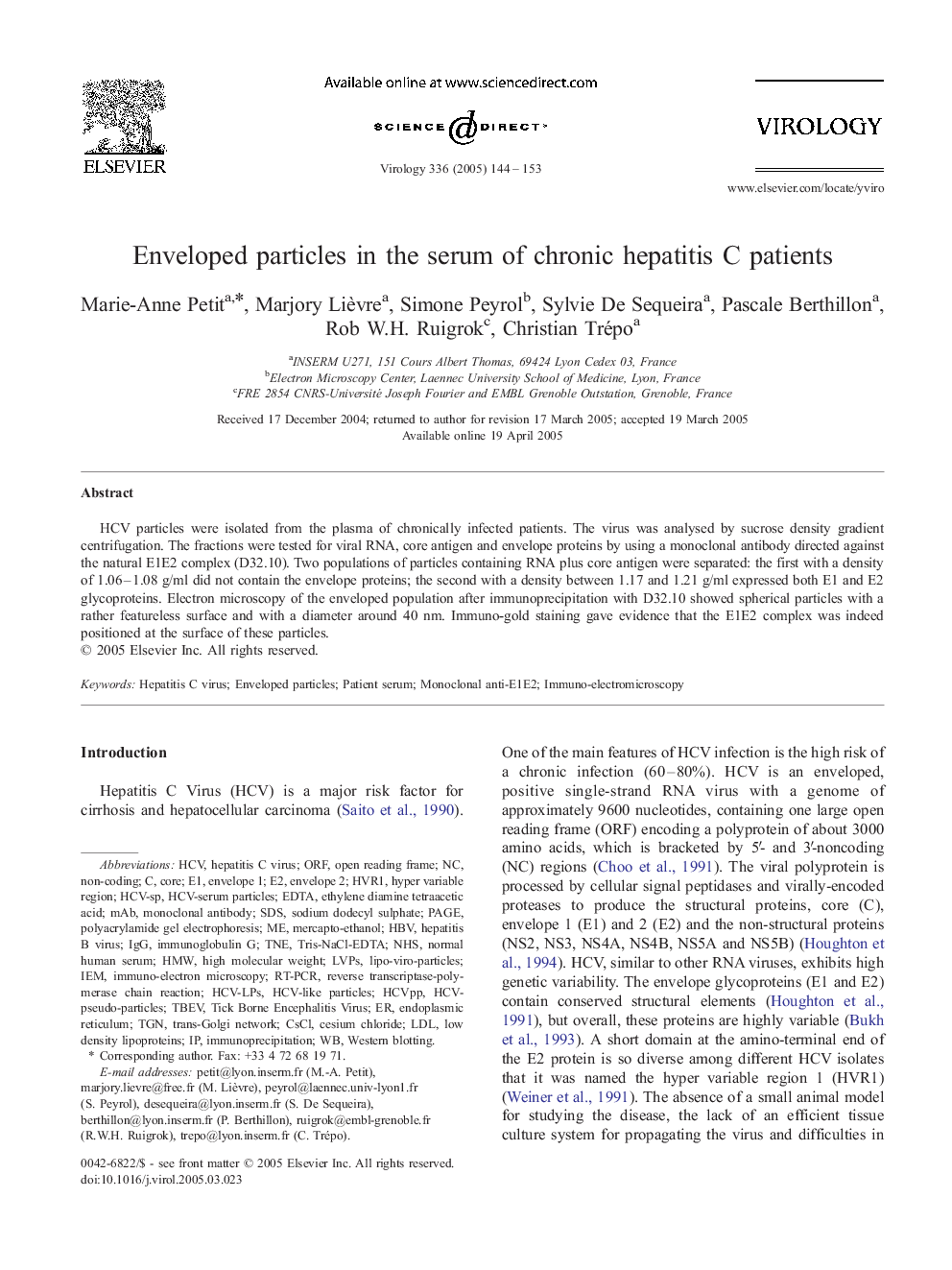| Article ID | Journal | Published Year | Pages | File Type |
|---|---|---|---|---|
| 9286793 | Virology | 2005 | 10 Pages |
Abstract
HCV particles were isolated from the plasma of chronically infected patients. The virus was analysed by sucrose density gradient centrifugation. The fractions were tested for viral RNA, core antigen and envelope proteins by using a monoclonal antibody directed against the natural E1E2 complex (D32.10). Two populations of particles containing RNA plus core antigen were separated: the first with a density of 1.06-1.08 g/ml did not contain the envelope proteins; the second with a density between 1.17 and 1.21 g/ml expressed both E1 and E2 glycoproteins. Electron microscopy of the enveloped population after immunoprecipitation with D32.10 showed spherical particles with a rather featureless surface and with a diameter around 40 nm. Immuno-gold staining gave evidence that the E1E2 complex was indeed positioned at the surface of these particles.
Keywords
SDSTNECsClTick borne encephalitis virusHVR1TGNHCVppenvelope 2envelope 1TBEvNHSHMWPAGEmAbIgGORFRT-PCRMonoclonal antibodyEDTAethylene diamine tetraacetic acidpolyacrylamide gel electrophoresisIEMimmunoglobulin GImmunoprecipitationsodium dodecyl sulphatenormal human serumTrans-Golgi networkendoplasmic reticulumNon-codingopen reading framelow density lipoproteinsLDLImmuno-electron microscopyCOREHBVHepatitis C virusHCVReverse transcriptase-polymerase chain reactionhigh molecular weightWestern blottinghepatitis B viruscesium chloride
Related Topics
Life Sciences
Immunology and Microbiology
Virology
Authors
Marie-Anne Petit, Marjory Lièvre, Simone Peyrol, Sylvie De Sequeira, Pascale Berthillon, Rob W.H. Ruigrok, Christian Trépo,
